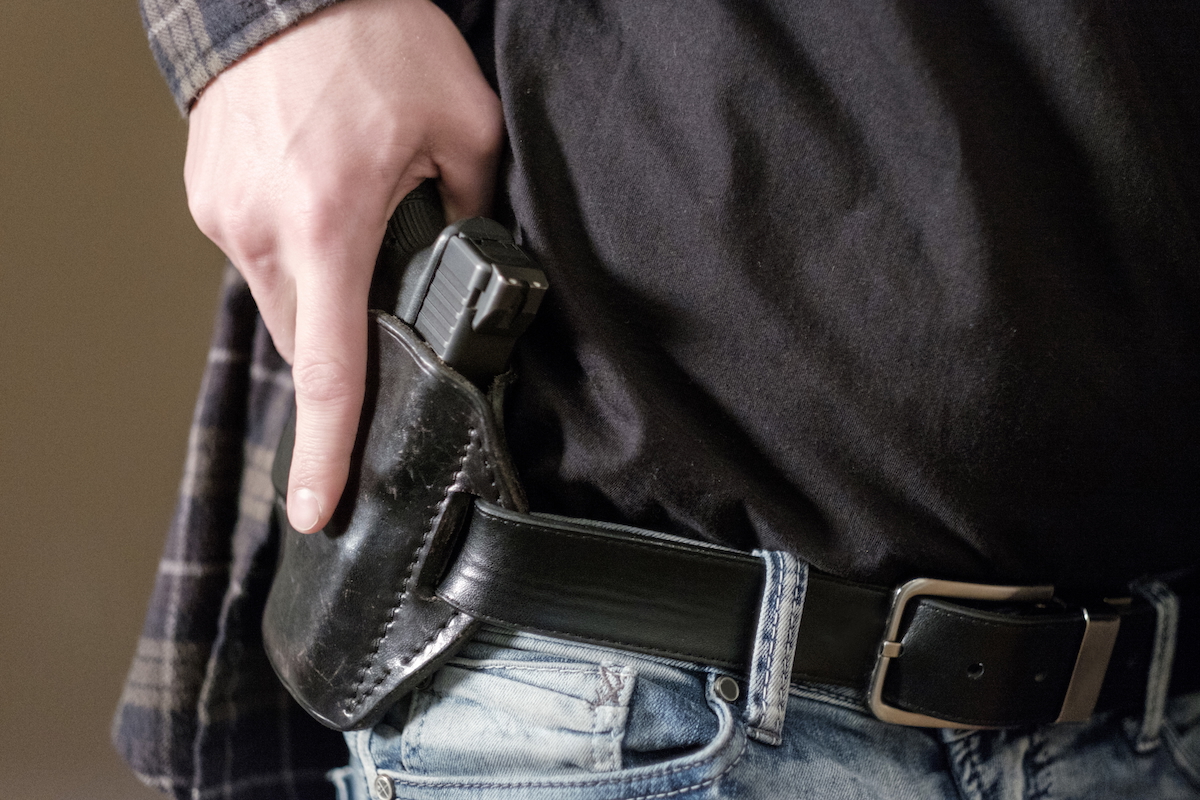


It’s called proportionate force: The only way to stop a bad guy with a gun, generally, is with a good guy with a gun. This doesn’t actually happen too much, though, if you ask the FBI and legacy media. But you perhaps shouldn’t ask them.
Because in reality, a study finds, armed citizens stop active shootings at least 10 times more than the FBI claims. That’s not exactly a rounding error.
Moreover, this is true of crime in general: Good citizens with guns thwart significantly more of it than is widely known.
As Washington Examiner’s Paul Bedard reports on the active-shooter study:
In a new review of 10 years of active shooter reports, a top public safety think tank said that good Samaritans stopped 36%-62% of the incidents, far more than the 3.7% the FBI and media commonly claim.
The Crime Prevention Research Center [CPRC] explained that the competing numbers are due to the FBI’s restrictive definition of active shootings and its misclassification of many.
For example, the center said the FBI doesn’t include in its count cases where armed citizens show their weapons but don’t shoot, and still thwart a mass shooting. In others, it has classified volunteer security guards as professionals.
More importantly, said the center’s President John R. Lott Jr., his report shows that having armed citizens is much more of a lifesaver than the FBI and media have told.
Providing detail, the CPRC writes in its report:
The FBI defines an active shooter as one or more individuals actively engaged in killing or attempting to kill people in a public place, not involving gang violence or some other crime such as robbery. Such an incident could be something as minor as one person being shot at and missed up to a mass public shooting.
While the FBI includes cases where civilians stop active shooters, the news media frequently relies on the limited number of these cases to argue that such interventions are rare. Headlines illustrate this framing: “Rare in US for an active shooter to be stopped by bystander” (Associated Press); “Rampage in Indiana a rare instance of armed civilian ending mass shooting” (Washington Post); and “After Indiana mall shooting, one hero but no lasting solution to gun violence” (New York Times). The FBI’s reports acknowledge that armed civilians stopped active shooting attacks in seven of the eleven years they reviewed.
When John Stossel asked the FBI about our claim that they had omitted many cases, the Bureau responded: “[Our data is] not intended to explore all active shooting incidents but rather to provide a baseline understanding . . .”
Unfortunately, though, this breeds misunderstanding. And apropos here is a twist on a famed Frédéric Bastiat line. That is, a bad social analyst observes only visible effects. A good social analyst observes visible effects — and what is hidden beneath.
Heinous mass shootings are obvious; they make headlines and shock sensibilities. You can’t miss them. But mass shootings that didn’t happen because a good armed person intervened are not the same kind of “sexy” story. This is even more true when that savior halts a miscreant merely by wielding a weapon and there’s no bloodshed. The media then imitate crickets.
And it isn’t just the area of mass shootings in which armed citizens’ intervention is underestimated. Nor are such findings anything new. Just consider the early-’90s research of then-Florida State University criminologist Gary Kleck, a liberal Democrat and lifelong ACLU member. His studies found that 2.2-2.5 million Americans use guns to deter crime every year. Moreover, approximately 400,000 of this number believe they would’ve been killed had they not been armed.
Not surprisingly, some dispute these statistics. Yet what if the actual numbers are but a fraction of the above? It still means that thousands of innocent lives are being saved.
Anecdotes in this regard are legion, too. Just consider the following three examples provided by website USA Carry reporting on the CPRC research:
There are even instances of preteen children using firearms to protect themselves and others. (Read my 2013 article “When Kids and Guns Mix.”) These are good examples of how guns are a “great equalizer.” What chance would these children have had, after all, of warding off adult male criminals hand-to-hand? And how many wouldn’t be alive today had they been unarmed, as anti-Second Amendment activists prefer?
Returning to active-shooter situations, the CPRC’s research explodes other myths as well. For example, as USA Carry relates (all quotations are the latter’s):
In fact, gun-control advocates often claim firearm owners’ weapons are more likely to be used against them than a criminal. What they don’t tell you:
This is because they’re including suicides in the data.
Deceitful much?
But perhaps we really should just listen to a certain liberal New York journalist on this topic. When asked on hidden video in 2013 to display on his lawn a sign stating “THIS HOME IS PROUDLY GUN FREE,” he had a telling answer.
“I am on your side on this,” the journalist said while declining the offer, “but I’m just wondering if that’s not an invitation to somebody with a gun!”
My, what a brilliant man.
